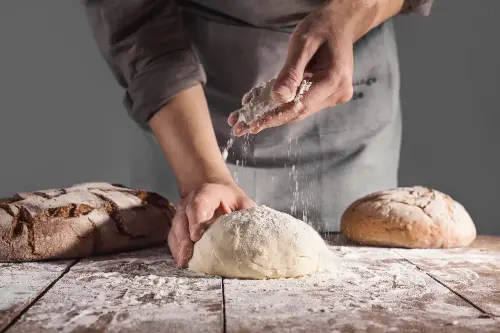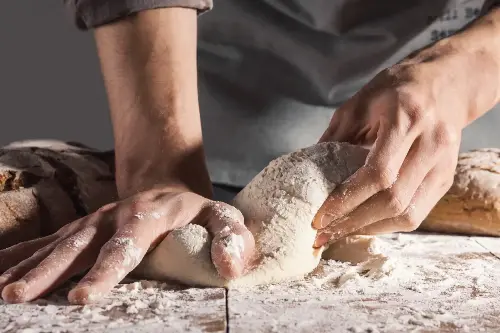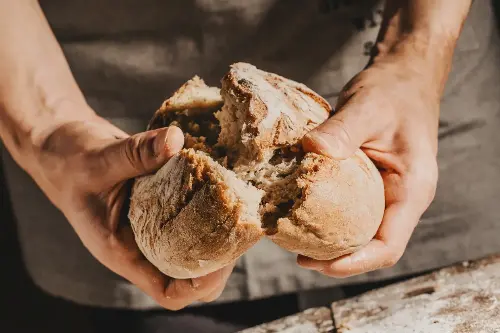There is something undeniably special about homemade bread. The aroma that fills your kitchen while it bakes, the warm crust fresh out of the oven, and the heavenly taste of your very first bite make breadmaking not just a task, but a delightful experience. Baking bread from scratch may seem daunting to many, yet, with a few simple steps and insider tips, anyone can unlock the secrets to perfect homemade bread—even if you’ve never so much as dusted your hands with flour before. Let’s journey through the process and unearth the magic behind this age-old comfort food.

Why Homemade Bread Is Worth The Effort
Few foods ignite nostalgia and contentment quite like bread fresh from the oven. Store-bought loaves may be convenient, but their mass production often leaves little room for true flavour or nutritional control. Homemade bread, on the other hand, offers a canvas on which you can experiment—playing with textures, tastes, and healthy ingredients.
Research has shown that making bread at home can be beneficial for your health: you decide on the amount of salt, sugar, and fat, and you can add extras like seeds, nuts, or fruit for a nutritional boost. A plain homemade loaf often contains fewer preservatives and additives compared to what lines the supermarket shelves. On top of the healthy angle, there’s a sense of accomplishment and mindfulness that comes from kneading dough—a calming ritual that connects you to centuries of bakers before you.

Understanding The Science Behind The Loaf
To create perfect bread, a touch of science is involved. The basic building blocks are simple: flour, water, yeast, and salt. Each ingredient plays a key role. Flour provides structure, yeast brings the dough to life (literally) by producing carbon dioxide that creates air bubbles, and salt enhances the flavour while helping to control yeast activity. Water binds everything together and hydrates the flour, initiating gluten development—the stretchy network that gives bread its trademark chew.
Yeast, often perceived as mysterious, is actually rather straightforward. It feeds on the natural sugars in flour, producing gases that cause the dough to rise. This fermentation process is also responsible for the subtle, rich flavours we associate with truly great bread. Even storing your dough in the fridge overnight (a process called “retarding”) can lead to a more complex, tangy taste, similar to sourdough.

A Simple Recipe For Everyday Breadmaking
You don’t need fancy equipment or advanced skills to get started. One of the simplest and most reliable recipes is classic white loaf bread. Here’s a quick and deliciously satisfying formula that yields a beautifully golden, soft-crumbed loaf.
Ingredients:
- 500g strong white bread flour
- 7g fast-action dried yeast (one sachet)
- 1.5 tsp salt
- 2 tbsp sugar or honey
- 320ml warm water
- 30g melted butter or olive oil (optional, for richer flavour)
Method:
- Mix together the flour, yeast, salt, and sugar (making sure the yeast and salt don’t touch directly).
- Form a well in the centre, add warm water and butter or oil if using, and mix with your hand or a wooden spoon until a shaggy dough forms.
- Tip the dough onto a lightly floured surface and knead for around 10 minutes, until smooth and elastic.
- Shape the dough into a ball and place in a lightly oiled bowl, cover, and let it rise in a warm spot for about 1-2 hours, until doubled.
- Punch down the dough, shape it into a loaf, and place it into a greased tin. Let it rise again until it peeks above the edges, about 45 minutes.
- Bake at 220°C (200°C fan) for 25-30 minutes, or until golden brown and the loaf sounds hollow when tapped. Cool on a wire rack before slicing.
This recipe is endlessly customisable—swap in wholemeal flour, sprinkle in herbs, or swirl in cinnamon sugar for a twist. The possibilities are endless, limited only by your imagination.
Top Tips For Truly Outstanding Bread
What differentiates a good loaf from an outstanding one? A few expert tricks can elevate your baking:
- Don't rush the rise. The longer the dough ferments, the deeper the flavour.
- Steam in the oven—place a tray of water on the bottom shelf to achieve a crispier crust.
- Score the top with a sharp knife before baking to let steam escape and give your bread a rustic, professional finish.
- Don’t slice too soon. Allow your loaf to cool for at least 30 minutes before cutting; this ensures the crumb sets and stays tender.

Fascinating Bread Facts You’ll Love To Know
Bread has been around for thousands of years—archaeologists believe the earliest loaves were made over 14,000 years ago. French baguettes have more regulations than some cheeses, with strict guidelines on ingredients, shape, and size. In the UK, sourdough has seen such a revival that some bakeries now have years-long waiting lists for special loaves.
The term “the best thing since sliced bread” isn’t an exaggeration: the bread-slicing machine, invented in 1928, revolutionised the way we eat. Yet, there’s something exquisite about sawing through your own creation with a bread knife.
Around the world, bread traditions blossom in countless forms, from Turkish simit rings to soft South African roosterkoek. Homemade bread connects us all through its simplicity and universal appeal.
Whether you’re after a quick weeknight loaf or seeking to master more intricate styles, the joy comes from experimenting and sharing your creations. After all, as Julia Child once famously declared, “How can a nation be called great if its bread tastes like Kleenex?”
Homemade bread is more than nourishment—it’s a celebration of patience, creativity, and the pleasures of eating together. So roll up your sleeves, dust off the flour, and join the glorious tradition of home bakers. Your perfect loaf awaits, and it will be every bit as satisfying as you imagine.
